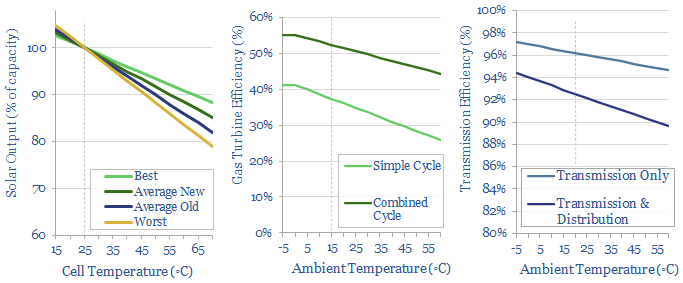This data-file aims to provide a simple model for how generally well-covered grids can fail catastrophically during a heatwave. Power generation is sensitive to heatwaves because an increase in temperature increases the resistance of any conductor to current moving through it. This increases power losses in every step of power generation, transmission, and distribution. Additionally, rising temperatures will create more demand for air conditioning and cooling in general. The two-fold effect of increasing demand and lowering efficiencies can have a huge effect on grid effectiveness.
We have modeled a simple grid with 1,000MW of typical generation capacity, which should be enough to cover 333-500MW of typical demand by a factor of 2-3x.
Drawing on technical papers, we have also quantified how wind, solar, gas turbines and transmission & distribution line losses all degrade at higher temperatures, making power generation in heatwaves more difficult.
Thus during a heat wave, this seemingly well-supported grid falls over.
The increasing share of renewables in the grid is also going to increase the odds of extreme events that sway energy balances by +/-2%, becoming 250x more frequent by 2050. This, together with climate change being expected to make extreme weather events more frequent, will decrease the reliability of global and local grids.

